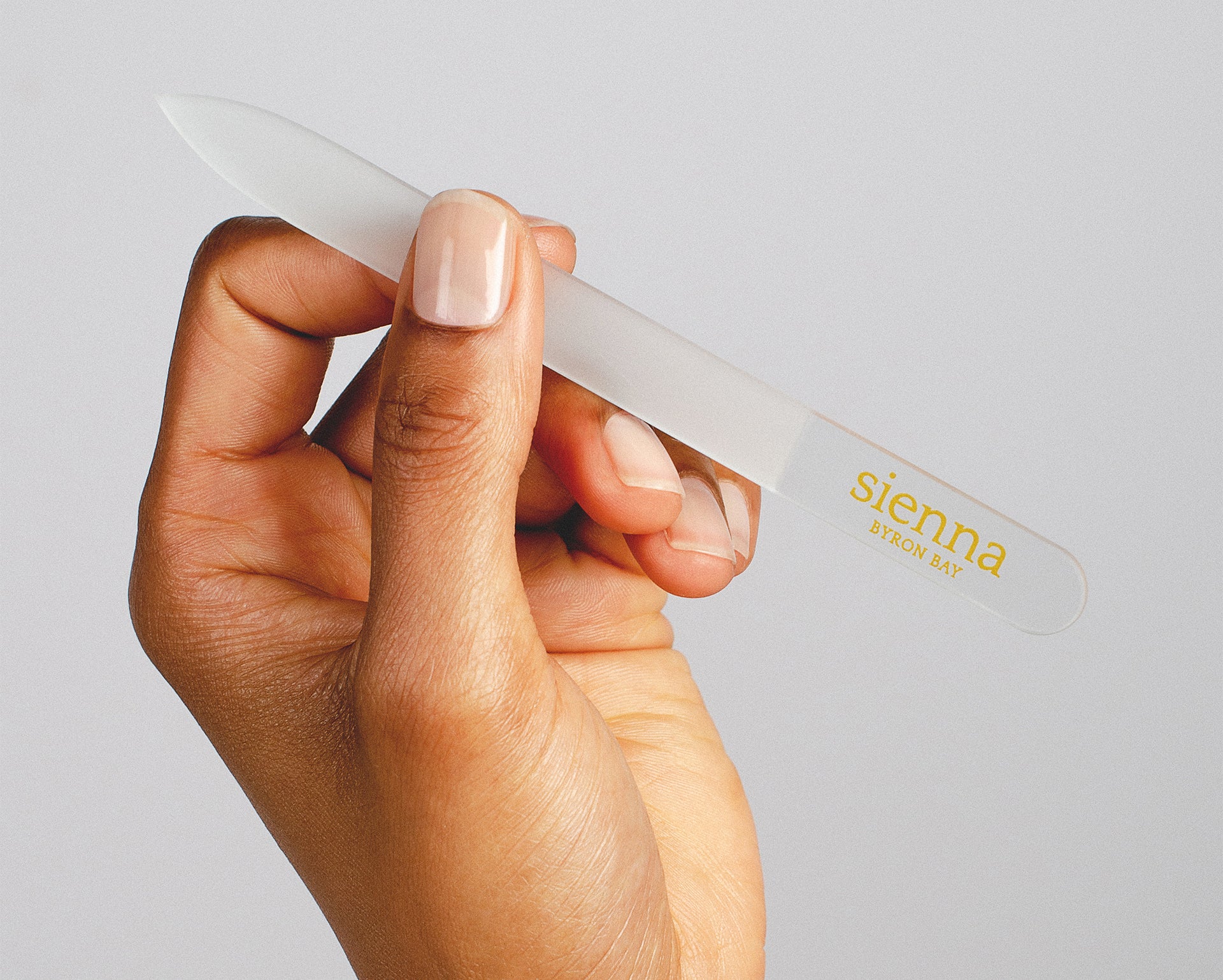If you routinely get professional manicures or usually use clippers instead of a nail file, you might never have learned the proper technique for filing nails. Filing helps maintain nail strength and health while allowing you to achieve the shape you want.
Filing incorrectly can weaken nails and create jagged edges. Below is a guide on how to file your nails safely so they don’t peel, split, or break.
Choosing the appropriate tools
Using the proper tools for nail filing supports nail health and durability. Gather the following items before beginning:
- Fingernail clippers. Useful for trimming excess length before you start filing.
- A nail file. Traditional emery boards work, but glass files are often preferred because they’re gentler on nails and easier to sanitize. Clean your nail file regularly to avoid spreading bacteria.
- Nail oil and cuticle oil. These help mend frayed nails and reduce the chance of future breakage.

Picking a nail shape
Natural nail shape is largely genetic, typically appearing round or square. The contour of your cuticle and nail bed usually dictates your nail’s inherent form.
Working with your natural shape tends to be most flattering and easiest to upkeep. If you’re trying a new style, consider having a professional nail technician do the shaping.
It’s not advised to remove the cuticle on either toenails or fingernails.
Here are several common nail shapes:
- Almond. Almond nails taper along the sides and meet at a softly rounded point, much like an almond.
- Round. Round nails mirror the natural tip of the finger and are a common, natural look. Typically, the sides are straightened then shaped into a semicircular tip.
- Square. Square nails have a flat top and straight, distinct corners. They suit shorter nails or nails that are naturally square or rectangular.
- Coffin. Coffin nails narrow as they extend from the nail bed and finish with a flat, squared tip. The form resembles a coffin and is also called “ballerina” because it resembles the square toe of a ballet shoe.
- Squoval. Squoval (square-oval) nails are like square nails but with slightly softened edges, giving a gentler oval appearance.
- Stiletto. Stiletto nails are similar to almond but come to a more pronounced, pointed tip. This shape is typically worn long; a shorter variant is sometimes referred to as a “mountain peak.”

How to file long nails
Filing long nails differs slightly from filing short nails. Follow these steps:
- If you want to reduce length, trim the nail before you file.
- Think of each nail in two parts: left and right.
- Hold your hand toward your face — you can make a half-fist, with the underside of your wrist facing up and nails angled toward you.
- Begin at one outer corner and file toward the center. Avoid sawing back and forth across the tip, as this can harm the nail.
- When you’ve shaped one side to your liking, repeat from the opposite corner toward the center.
- Work slowly. Filing too quickly can remove too much nail and make it difficult to achieve the intended shape.
How to shape short nails
Shaping short nails follows a similar approach with a few adjustments.
- There’s no need to trim if nails are already short, but if lengths vary, clip them to a consistent length.
- Start at an outer corner and file toward the middle, then do the other corner.
- Avoid sawing back and forth.
- Be especially gradual with short nails because over-filing can make them painfully too short.
What to avoid
Don’t move the file back and forth across the nail in a sawing motion. This habit can fray the nail and even harm the nail bed and cuticle.
Filing this way can make the whole nail feel loose, similar to a wobbly tooth.
Final thoughts
Filing your nails is an effective way to maintain even length and shape and to reduce the risk of breakage.
However, improper filing can result in jagged, frayed edges and potential damage to the nail bed or cuticle.
For best results, file from each outer corner toward the center on both sides rather than sawing back and forth across the nail.


















Leave a Reply
You must be logged in to post a comment.